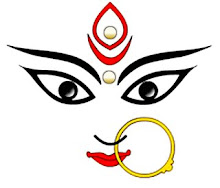The Hymns
All the songs in the Tevaram [called pathikam, Tamil:பதிகம்] are believed to be in sets of ten. The hymns were set to music denoted by Panns and are part of the canon of the Tamil music. They continue to be part of temple liturgy today. Several of these poems refer to historic references pointing to the saint-poets' own life, voice of devotee persona, using interior language of the mystic. Multi-vocal rheotoric is commonly used taking on personal emotions and genres and some voices of classical Sangam literature. Of the three, Sambandhar's life is better interpreted by his verses. According to Zvelebil, Sambandhar's lyrics are characterized by egocentricism, by militancy and great ardour, by a warm feeling for the greatness and beauty of Tamil language with scholarly experimentation in meters showing familiarity with Sanskrit forms. Sambandhar's poetry shows structural and thematic distinctiveness of the bhakti poetry:
-
-
- "In the temple where he is throned, who bids us not lose heart
- In the hour when our senses grow confused, the way grows dim,
- Our wisdom fails, and mucus chokes our struggling breath,
- In Tiruvaiyar, where the girls dance around, and the drumbeats sound,
- The monkeys fear the rain, run up the trees, and scan the clouds".
Appar's poems dealt with inner, emotional and psychological state of the poet saint. The metaphors used in the poems have deep agrarian influence that is considered one of the striking chords for common people to get accustomed to the verse. The quote below is a popular song of Appar glorifying Shiva in simple diction.
-
-
- "மாசில் வீணையும் மாலையும் மதியமும்
- வீசு தென்றலில் வீங்கிள வேணியில்
- மூசு வண்டறை பொய்கையும் போன்றதே
- ஈசன் எந்தை இணையடி நிழலே"
translating to
-
-
- "My Lord's twin feet are like the sweet-sounding Veena
- like the full-moon of the evening
- like the gently breeze blowing from the South
- like the young spring
- like a bee-humming lake"
Cuntarar's hymns [ Cuntarar was the Lord's comrade] had a touch of humour, a rare thing in religious literature. In one of the verses, he playfully draws an anology with Siva with himself, both having two wives and the needs of nagging wives.
-
-
- "Thou art half woman. Thyself
- Ganga is in thy long hair
- Full well canst thou comprehend
- Burden of woman so fair".
Cuntarar's hymns also gives us some idea of the complexity of his earthly life with two women, as well as his love and concern for each.
The tendency to incorporate place names known to the folks in the idiom of the poems is another characteristic feature of Tevaram. The poems also involved glorifying the feat of Shiva in the particular location - the usage of locale continuously occurring in the verses is a testament. According to Prentiss, the poems do not represent social space as a contested space, the hymns represent the hymnists were free to wander and to offer their praise of Shiva. The emotional intensity of the hymns represent spontaneous expression of thought as an emotional responses to God.
Paadal Petra Sthalams are 275 temples that are revered in the verses of Tevaram and are amongst the greatest Shiva temples of the continent. The Divya Desams by comparison are the 108 Vishnu temples glorified in the poems of the contemporary Vaishnava Alvars of Tamil Nadu, India. Vaippu Sthalangal are places that were mentioned casually in the songs in Tevaram. The focus of the moovars hymns suggests darshan [seeing and being seen by God] within the puja [worship] offering. The hymnists made classificatory lists of places likekatu [for forest], turai [port or refuge], kulam [water tank] and kalam [field] being used - thus both structured and unstructured places in the religious context find a mention in Tevaram.
Compilation
Raja Raja Chola [985-1013 CE] embarked on a mission to recover the hymns after hearing short excerpts of Tevaram in his court. He sought the help of Nambi Andar Nambi. who was a priest in a temple. It is believed that by divine intervention Nambi found the presence of scripts, in the form of cadijam leaves half eaten by white ants in a chamber inside the second precinct in Thillai Nataraja Temple, Chidambaram. Thebrahmanas [ Dikshitars] in the temple opposed the mission, but Rajaraja intervened by consecrating the images of the saint-poets through the streets of Chidambaram. Rajaraja thus became to be known as Tirumurai Kanda Cholan meaning one who saved the Tirumurai. Thus far Shiva temples only had images of god forms, but after the advent of Rajaraja, the images of the Nayanar saints were also placed inside the temple.
Nambi arranged the hymns of three saint poets Sambandhar, Appar and Sundarar as the first seven books, Manickavasagar's,Tirukovayar and Tiruvacakam as the 8th book, the 28 hymns of nine other saints as the 9th book, the Tirumandiram of Tirumular as the 10th book, 40 hymns by 12 other poets as the 10th book, Tirutotanar Tiruvanthathi - the sacred anthathi of the labours of the 63 nayanar saints and added his own hymns as the 11th book. The first seven books were later called as Tevaram, and the whole Saiva canon, to which was added, as the 12th book, Sekkizhar's Periya Puranam (1135 CE) is wholly known as Tirumurai, the holy book. Thus Saiva literature which covers about 600 years of religious, philosophical and literary development.
Nambi was also involved in setting musical modes for Tevaram. He accomplished this by visiting his native village of Tirunilakanta Yalpanar, where he met a woman of the panar caste who learned the mode of divine revelation. She returned to Chidambaram with Nambi, where she sang and danced for Shiva.
In 1918, 11 more songs were found engraved in stone temple in Tiruvidavayil in a village close to Nannillam and it was the first instance found where Tevaram verses were found in inscriptions.
In Culture
Tevaram was one of the sole reasons for converting Vedic ritual to Agamic puja followed in Shiva temples. Though these two systems are overlapping, Agamic tradition ensures the perpetuation of the Vedic religion's emphasis on the efficacy of ritual as per Davis.Odhuvars,Sthanikars, or Kattalaiyars offer musical programmes in Shiva temples of Tamil Nadu by singing Tevaram after the daily rituals. These are usually carried out as chorus programme soon after the divine offering. The singing of Tevaram was followed by musicals from the music pillars in such temples like Madurai Meenakshi Amman Temple, Nellaiappar Temple and Suchindram.
The singers of these hymns were referred as Tirupadiyam Vinnapam seyvar or Pidarar from the inscriptions of Nandivarman III in the Tiruvallam Bilavaneswara temple records. Rajaraja deputed 48 pidarars and made liberal provisions for their maintenance and successors. A few earlier records give details about the gifts rendered to the singers of Tevaram from Parantaka I of 8th century. A record belonging to Rajendra I mentions Tevaranayakan, the supervisor of Tevaram and shows the institutionalisation of Tevaram with the establishiment of a department. There are records from Kulothunga Chola III from Nallanyanar temple in South Arcot indicating singing of Tiruvempavai and Tiruvalam of Manickavasagar during special occasion in the temple.
From the 13th century, the texts were passed on to the Odhuvars by the Adheenams or mathas and there was no more control by the kings or the Brahmanas. The Odhuvars were from vellala community and were trained in ritual singing in Tevaram schools.
Periya Puranam, the eleventh-century Tamil book on the Nayanars that forms the last volume of the Tirumurai primarily had references only toTevaram and subsequently expanded to 12 parts. One of the first anthologies of moovars hymns called the Tevara Arulmuraitirattu is linked to Tamil Saiva siddhantha philosophy by grouping ninety-nine verses into 10 categories. The category headings are God, soul, bond, grace, guru, methodology, enlightenment, bliss, mantra and liberation - correspond to Umapthi's work, Tiruvarutpayan. Tirumurai kanda puranam is another anthology for Tirumurai as a whole, but primarily focuses on Tevaram. It is the first of the works to refer the collection of volumes asTirumurai
Saiva Neri [The Saiva Way]
63Nayanars are from Holy South India. Tamilnadu is the land of Temples and 64 ThiruVilayadal by Lord. ThiruGnaanaSambanthar beat Jainism by curing the fever of the King,Contest in Fire and Contest in Water. The Jains,themselves agreed to die if they failed to win the contests. ThiruGnaanaSambanthar,ThiruNaavukkuArasar,Sundara Murthy Nayanar,Manickavasagar are the four Paramaacharyas [holy teachers]. Manickavasagar beat Budhisht monks in a debat by curing the Dumbness of Srilanka King' daughter in Chidambaram. ThiruNaavukarasar beat Jain Monks who gave many troubles to him. Jain Monks gave poison to him, Locked him in a Lime stone furnace and Throwed him in the sea by tied to big stone. But ThiruNaavukarasar won all the troubles and Praised Lord. SaivaNeri is the one follows in the path of Naalvar.Tevaram helps us to follow in the Saiva Neri.






















